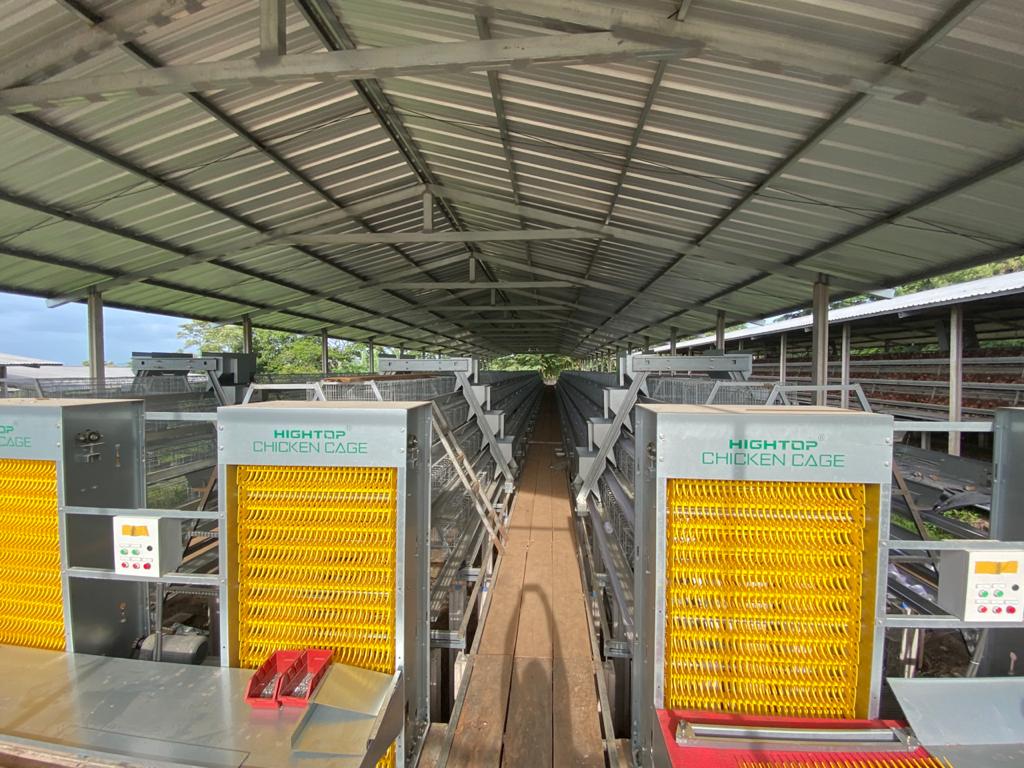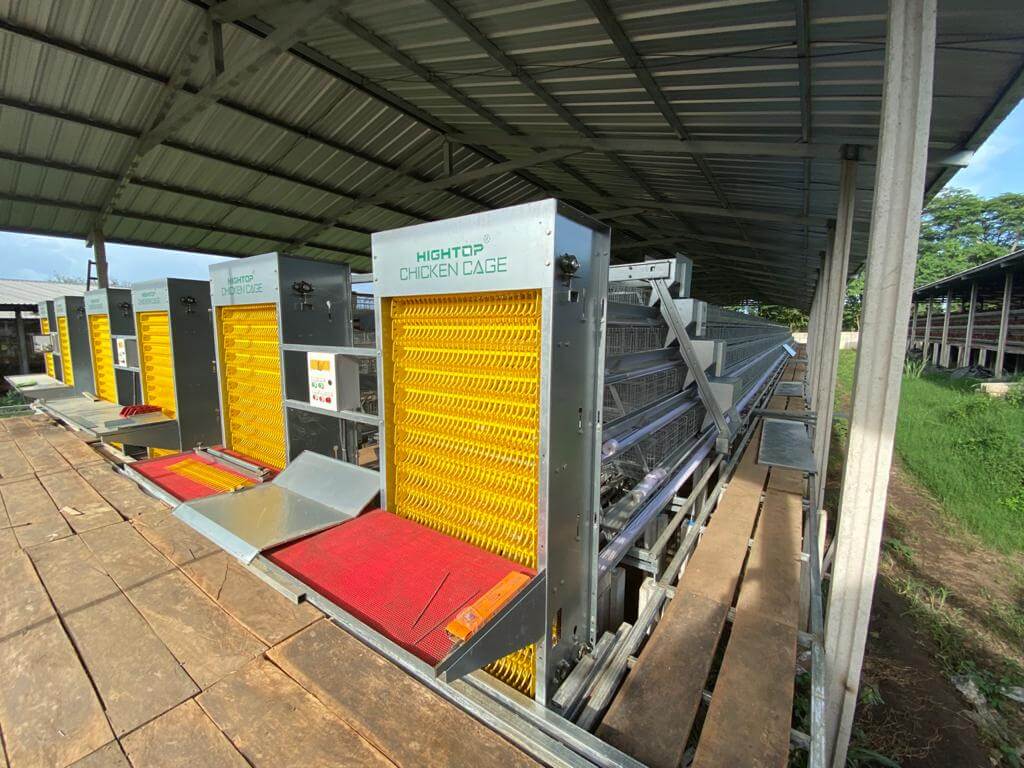In modern poultry farming, efficiency and egg quality are two of the most critical success factors. One of the major breakthroughs in recent years is the automatic egg collection system, especially when integrated into automatic laying hen cages. Traditional manual egg collection is not only labor-intensive but also prone to errors, leading to a high rate of egg breakage and time-consuming handling. This article will explore why automated egg collection systems can effectively reduce egg breakage rates and significantly increase collection speed, making them an essential feature for modern egg production operations.
1. Zero Human Contact: Eliminate Manual Errors and Minimize Damage
Manual egg collection often leads to accidental breakage. Workers might unintentionally apply too much pressure, drop eggs during handling, or cause collisions during transfer. Additionally, workers frequently entering and exiting the poultry house can disturb the hens, leading to stress, pecking, and even stepping on freshly laid eggs.
In contrast, an automatic egg collection system eliminates these problems entirely by:
- Allowing eggs to roll gently from the cage to the conveyor belt.
- Preventing human contact throughout the process.
- Using soft, non-abrasive surfaces to minimize shock or vibration.
Result: The egg breakage rate drops significantly—from 3–8% with manual collection to just 0.3–1% using an automatic egg collector.
2. Optimized Egg Transport Design for Maximum Protection
The design of the egg collection path is crucial. The inclination angle of the cage bottom mesh (typically around 8°) allows the eggs to roll smoothly onto the collection belt. The belt is made of food-grade rubber or plastic, which absorbs shock and reduces impact force.
Other protective features include:
- Egg lips on the trough edge to prevent impact with the cage.
- Segmented transfer systems that gently elevate eggs from multiple tiers and transport them without sudden movements or vibration.
These design improvements create a smooth and cushioned journey from laying to sorting, drastically reducing the chance of cracks or damage.
3. High-Frequency Collection Increases Speed and Freshness
One of the most powerful benefits of automation is speed. In traditional systems, it may take up to 4–6 hours to collect eggs from a large farm, with 15–20 workers manually gathering from each cage row.
With an automatic egg collection system, conveyor belts start 4–6 times a day, ensuring that:
- Eggs stay in the cage for less than 30 minutes.
- They are quickly transferred to the sorting, grading, and packaging area.
- Eggs are processed within 1 hour from laying to packaging.
This continuous and frequent collection not only improves operational efficiency but also ensures that eggs are cleaner, fresher, and less likely to be contaminated or damaged.
4. Better Flock Management and Lower Stress Levels
Automated systems also contribute to better environmental and flock behavior management:
- Fewer disturbances from human entry reduce flock stress.
- Less pecking or stepping on eggs due to faster removal.
- Cleaner cages, as egg residues are not left behind to attract dirt or pests.
Healthy, calm hens are more productive and less likely to engage in destructive behaviors, leading to a higher yield of marketable eggs.
5. Real-World Benefits and Economic Gains
Let’s consider a case study:
Farm size: 100,000 laying hens
Manual collection:
- 15–20 workers × 4–6 hours/day
- Egg breakage rate: 5%–8%
- Annual labor cost: Very high
Automatic egg collection:
- Only 2–3 staff needed for monitoring
- Egg breakage rate: 0.3%–1%
- Annual labor savings: over $500,000
- Egg loss reduction: up to 900,000 eggs/year, or $150,000–$200,000 saved
These statistics clearly show that automatic egg collection systems offer significant returns on investment.
Why Choose Hightop A Type Automatic Laying Cage?
After understanding the value of automation, the next step is choosing the right equipment. Hightop’s A Type automatic laying cage integrates a state-of-the-art automatic egg collection system and is engineered for optimal performance.
Key Advantages:
- 439 cm² per bird: Spacious design improves hen welfare and egg production.
- 8° cage bottom slope: Eggs roll out gently to prevent cracks.
- Reinforced bottom mesh: Withstands 50kg/㎡, avoids cage deformation.
- Sliding door with clip: Easy to move chickens in and out, prevents escapes.
- Feed uniforming and return system: Ensures even feed distribution, minimizes waste.
- Large PVC feed troughs: Reduce spillage and save feed.
- Fully compatible with auto egg collection system: Smooth integration ensures maximum efficiency.
Conclusion: Modern Farms Need Modern Solutions
The automatic egg collection system is more than a convenience—it’s a transformative technology that boosts efficiency, reduces waste, and improves egg quality. Combined with a high-performance cage system like Hightop’s A Type automatic laying cage, it provides a future-proof solution for egg farms aiming to scale up while minimizing operational costs.
If you’re looking to improve profitability, reduce egg loss, and modernize your farm, Hightop A Type cage system with automatic egg collection is the smart choice.
Request A Quote
Please contact us or get quote via the contact form below, we’ll get back to you as soon as possible.










